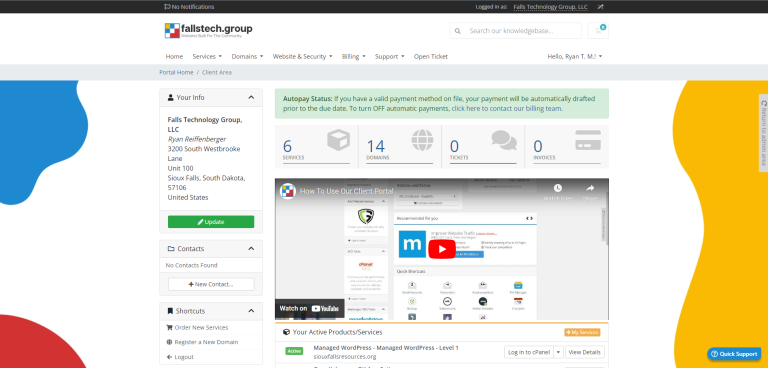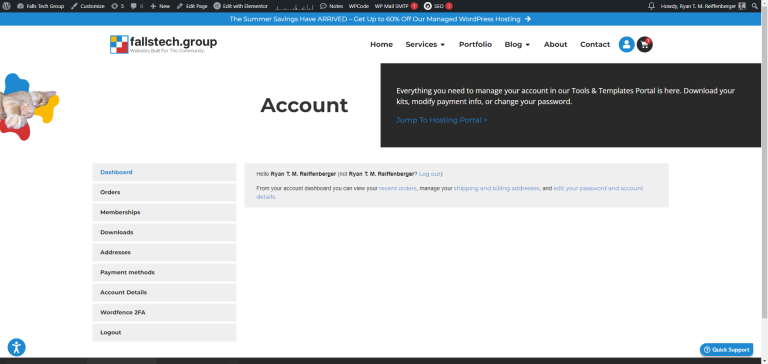One of the biggest fears that any website owner has is that all of the hard work they have put in on building their SEO rankings will be impacted when they switch hosts. It’s pretty common that we get this question, so we’re here to break this all down for you.
TL;DR: Does Your Web Hosting Service affect your SEO? Yes – But only if your migration is done improperly.
Search Engines take into account a number of different factors when placing you in their rankings, including how responsive and healthy your website is. Your web host can have a direct impact on this from maintaining uptime, to website load times. If your website loads slowly, your SEO ranking may degrade. Below, we’ve listed a few of the most common changes and how they may impact your rankings.
DNS Changes
Normally, changing your nameservers should not have an impact on your SEO performance. Because this task is typically a quick one, with only minutes before the records usually go live, Search Engines won’t really notice this change all to much, and it will likely have little merit on your final rank at the end of the day. Switching nameservers is also a straightforward process that doesn’t take long, and has a small margin for error. Additionally, editing things like your SRV, MX, or DMARC records should
Domain Name Change
Sometimes you will need to change your domain name when moving a website. It is recommended that you put in place a 301 redirect (permanent) on each old page to take your users to the corresponding new one. The most commonly used types of redirects in web development are 301 – which indicates that the move is permanent – and 302 – which lets Search Engines know that the move is not permanent. Nevertheless, changing domains is typically a permanent move, and this is why the 301-redirect is the most commonly used. This can be accomplished a number of different ways, and varies based on each individual case.
Web Host Change
While migrating your site, the difficulty in maintaining your SEO Rankings is usually directly correlated with how complicated or intricate your site is. For instance, if you’re hosting on multiple servers with numerous redundancy factors, and lots of pages, you may run into a longer transition process to get things moved over smoothly.
Breaking everything down, a Web Host is fundamentally responsible for keeping your site online, and providing you the equipment to do so. When changing a web host, there are a few steps that need to be taken:
Increase WordPress Performance For FREE With These Tips!
Sign up for our FREE email series and improve your website load speeds!
- You will need to set your website up on your new host completely by copying all files and databases associated
- If you’re switching to a new nameserver, you may need to rebuild your DNS configuration on your new host
- You will also need to make changes to DNS to direct the domain name to the new host and ensure that Search Engines are crawling the right pages.
When attempting to mitigate negative SEO effects, you will want to keep everyone in consideration while doing so. Everyone includes not only the customers who view your pages, but your website operators and the search engines as well.
Notifying the search engines about the various changes being made in addition to the new hosting location, site structure, domain, URL, and link sources, search engines will seamlessly adjust to your new host with minimal effects to your SEO.
As with any web hosting situation, there can be unforeseen situations that arise. Even if you follow all of the right steps, you may experience changes in your SEO that you may not expect, and you should be prepared to work on and deal with these problems as they arise. We always hope that the move is a positive one, but there is always a small chance it might not depending on each use case.
IP Address Change
Your website’s IP address has little to no direct impact on your SEO. However, owning a dedicated IP address can indirectly affect things that do impact SEO.
Owning an IP address makes it much easier to set up a private SSL certificate and, as we all know, Google prefers websites with SSL certificates. In fact, until 2007, websites using shared IP addresses couldn’t even get SSL certificates.
A dedicated IP address can also provide for better performance. Dedicated IP addresses are faster to load than shared IP addresses. This results in users (and Google) arriving on a website faster. Having a local server can also help your SEO as physical distance can impact website load time.
Downsides of shared IP Issues
Most hosting provider offers “web hosting”, “WordPress hosting” and “dedicated hosting”. When choosing a hosting plan, you’ll need to make a choice between using a shared IP address, and using a dedicated one.
Dedicated IP hosting has only one website, while shared web hosting shares the same IP Addresses for multiple websites to reduce hosting costs. In addition, shared hosting plans now have the ability to have individual SSL Certificates, which are a MUST for the eCommerce industry.
Large websites and ecommerce sites often use dedicated IP since these large websites need the bandwidth to handle the high number of visitors.
So How Do I Make This Move?
When making your move to a new host, there’s a series of steps that you should take to help keep this process invisible and seamless to the users. You also want to make sure that search engines are aware of it so that your new pages can get the same quality signals that the old pages had. Errors such as the 404 error should be avoided at all costs as they will harm the user’s experience and negatively impact your search engine rankings. Here are some of the best practices to take when transitioning.
- Test Your Transition Process – We recommend using a subdomain or directory first, and then using 301 redirects to redirect to the new site permanently after this has been completed. This will let Search Engines know that your site has moved for good.
- Test Your Website – Test to see that your web pages are properly showing up in the search engine results. Once you’re feeling good about the transition, you can move the entire website. It may be simpler to do what’s called a blanket redirect where you transfer all the content from your old site to your new site simultaneously. However, it is not typically recommended as it may negatively affect the users’ experience. We recommend doing a page-to-page redirect as it gives your users a transparent and consistent experience.
- If you are changing your domain – It is recommended to move the site first, and then redesign after the migration. This will mitigate the amount of change that your users can see during each stage of your process to make the move seem more seamless for them.
- Be sure to check both internal & external links in your site – While it’s obvious that your users’ access is the most important, your site also must be functioning correctly as well. To be sure that this happens, you will want to check both external AND internal links on your site to see that they are properly updated if necessary. It’s important that you don’t have any broken links when your site is live.
- Update Google Search Console – If you are registered on Google Search Console (You Should Be if you are Optimizing for SEO), you will need to issue a Change of Address that will let Google know that you have moved to a new domain.
- Retain Your Old Domain for 180 Days – We recommend hanging on to any old domain name you have for up to 180 days to an additional year to give search engines and clients the opportunity to make sure they have all of the new information, and that no traffic or emails are being lost. During this time you will want to consistently check to be sure that your traffic is being properly directed through your new domain.







